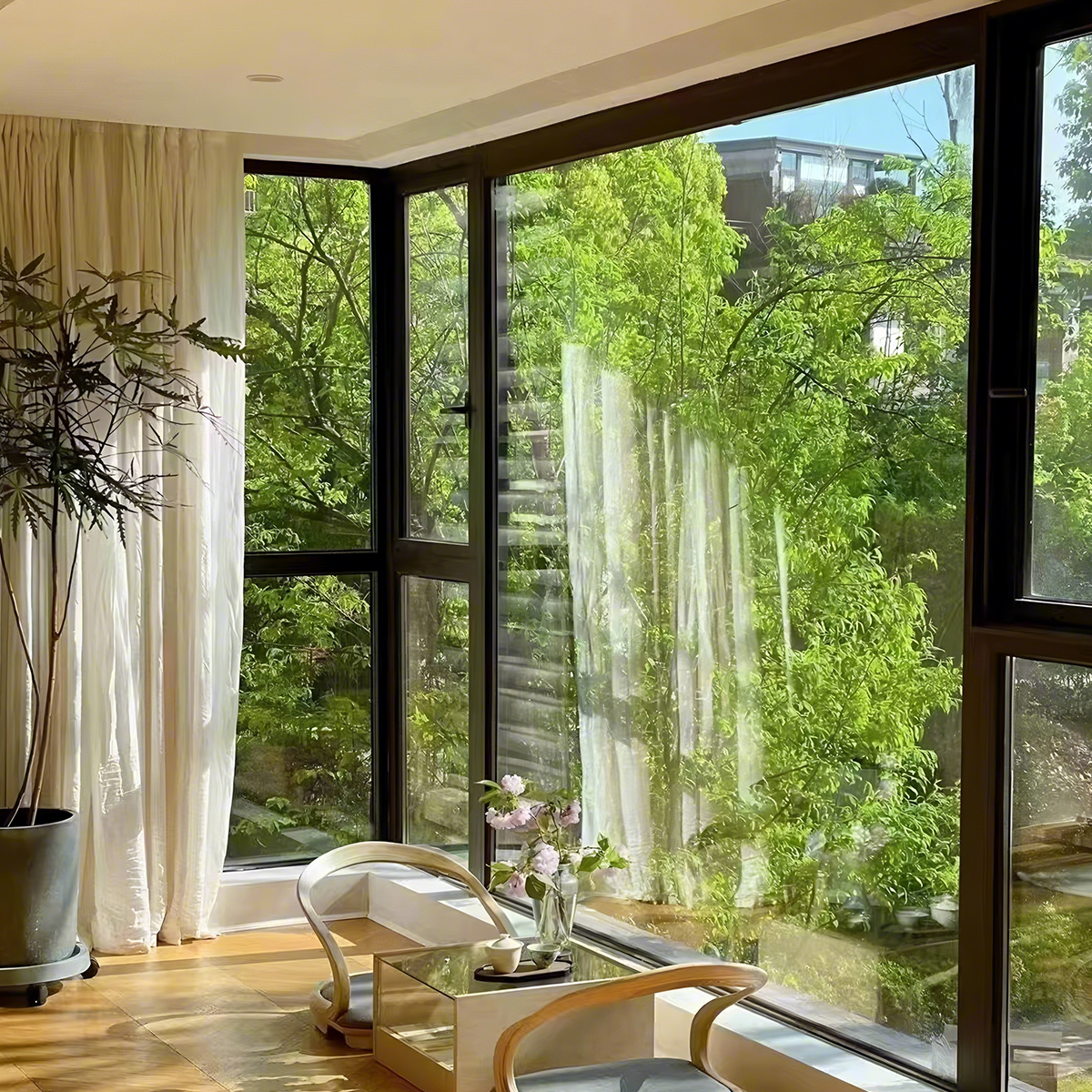In the busy urban life and the bustling crowd activities, external noise is always present, seriously affecting people's quality of life, work and rest. As an important barrier between buildings and the outside world, the silent performance of doors and windows has become the key to creating a quiet space. Advanced door and window silent technology, through scientific design and innovative technology, isolates people from the outside noise and creates a quiet and comfortable living and working environment.
Noise source and silent technology principle
There are three main reasons why doors and windows generate noise. The first is air transmission. The external traffic noise, human voice, etc. are transmitted directly through the door and window glass or from the door and window gaps through air vibration. The second is solid sound transmission. When the door and window are hit or vibrated by external force, the sound will be transmitted to the room through the door and window frame, hardware and other solid structures; the third is resonance sound transmission. When the frequency of external noise is the same as the inherent frequency of the door and window, it will cause the door and window to resonate and amplify the noise effect.

For these noise transmission channels, door and window silent technology has made breakthroughs from multiple dimensions. The first is the sealing technology. By installing multiple sealing strips between the door and window frames and the sashes, and between the glass and the window frames, a tight sealing structure is formed to block the air sound transmission channel. High-quality sealing strips are made of materials such as EPDM rubber, which have good elasticity and weather resistance, can maintain the sealing effect for a long time, and effectively reduce the noise caused by air infiltration.
The second is the selection and optimization of glass materials. Double-layer or triple-layer insulating glass is a common silent glass configuration. The sealed air layer or inert gas (such as argon and krypton) between the glass can effectively block the propagation of sound. This is because the acoustic impedance of gas is different from that of glass. Sound is reflected and refracted at the interface between glass and gas, and a large amount of sound energy is lost. In addition, laminated glass sandwiches a layer of PVB film between two layers of glass. When the glass is impacted by sound waves, the PVB film can absorb vibration
energy and reduce the transmission of sound, especially for high-frequency noise.
Furthermore, the structural design of doors and windows is also crucial to the silent effect. The thermal insulation strip design of the broken bridge aluminum doors and windows can not only block heat conduction, but also reduce solid sound transmission; the elastic connection material is used between the window frame and the wall to reduce the impact of external vibration on the doors and windows and avoid resonance sound transmission.

Analysis of multiple silent door and window types
In the market, different types of silent doors and windows meet diverse needs. Casement windows have become a popular choice for silent doors and windows due to their good sealing performance. When closed, the window sash fits tightly with the window frame, and multiple sealing strips form a sealed cavity to effectively block noise. In particular, the inward-opening and inward-tilting casement windows can achieve micro-ventilation while maintaining excellent sealing performance, ensuring indoor air circulation without affecting the silent effect.
The silent performance of sliding windows has also been greatly improved by improving the track and pulley system, increasing the number of sealing strips and optimizing their structure. Some high-end sliding windows adopt a double-track double-sash design, with sealing strips between the sashes and between the sashes and the window frame, which are combined with wool strips to further enhance the sealing effect and reduce noise entry.
Folding doors also have unique designs in terms of silence. The door frame and the edge of the door leaf are both installed with sealing strips. When the folding door is closed, the strips squeeze each other to form a tight seal, effectively isolating noise. In addition, the hardware accessories of the folding door have been specially treated, so that they are silent and smooth when opened and closed, avoiding additional noise caused by hardware friction.

Scenario application and purchase points
In the family scene, bedrooms and study rooms have higher requirements for silence. The bedroom is equipped with silent doors and windows, which can keep people away from the outside noise at night and enjoy quality sleep; the study room is equipped with silent doors and windows to create a quiet and focused environment for reading and working. In commercial places, such as conference rooms, recording studios, hotel rooms, etc., silent doors and windows are even more indispensable. The silent doors and windows of the conference room ensure that the content of the meeting is not disturbed by the outside world, while preventing the sound of the meeting from leaking out; the professional silent doors and windows of the recording studio provide a pure acoustic environment for audio recording; the silent doors and windows of the hotel rooms enhance the guests' stay experience and enhance the competitiveness of the hotel.
When purchasing silent doors and windows, consumers need to pay attention to multiple aspects. First, check the sound insulation performance indicators of doors and windows, such as the sound insulation volume (unit: decibel). The higher the value, the better the sound insulation effect. Secondly, check the material and installation process of the sealing strip to ensure that the strip is soft, flexible and firmly installed. Furthermore, understand the configuration of the glass and give priority to glass types with good mute effect such as hollow glass and laminated glass. Finally, pay attention to the quality of the hardware accessories of doors and windows. High-quality hardware accessories not only operate smoothly, but also reduce the noise caused by friction, while ensuring the service life and sealing performance of doors and windows.
With continuous innovation and development, the silent technology of doors and windows provides people with a reliable solution to isolate themselves from the outside world. Whether it is a home user who pursues a quiet life or a commercial place with strict requirements on the acoustic environment, the reasonable selection and installation of silent doors and windows can create a quiet and comfortable space, allowing people to find a quiet place in the noisy world.








